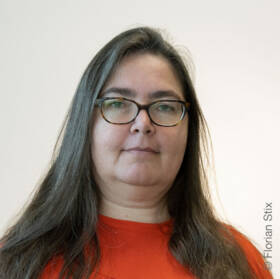Pathways into a climate-neutral future of the city of St. Pölten
Background
Protecting the climate and the environment poses a major challenge. Apart from reducing the emission of greenhouse gases significantly, it is also an urgent necessity to stop the loss of biodiversity, to counteract the acidification of the oceans, to limit land usage and consumption of space and to reduce the use of non-recyclable phosphorus and other persistent pollutants. This does not only require technological innovations, but also a new mindset acknowledging that human activities need to move along “planetary boundaries”. Because measures in the past fell short of requirements, huge challenges are awaiting us. The steps we take in the next decade are decisive in tackling the problems we face.
Project Content & Goals
The European Commission has launched an ambitious initiative called "100 climate neutral cities by 2030": In less than ten years, 100 cities throughout Europe are to find their own independent and sustainably effective ways to a climate-neutral future while concomitantly furthering urban and economic development as well as life in the city itself. The first step on the way to a climate-neutral future for St. Pölten is the project "St. Pölten 2030: KlimaNEUTRAL und KlimaFIT". In line with the initiative of the European commission a strategy for becoming a European climate model city will be developed within one year. The project involves various stakeholders and the civil society. It aims to create a vision for a climate-neutral city, which is supported by as many people as possible. Fields of action are identified and measures are taken and all outcomes are combined in a "Roadmap to Climate Neutrality".
Methods
That climate neutrality will put a great strain on society is indisputable. Hence, measures and concepts that enable a “fair” transition are required. “Sustainability transition“ intends to achieve that and serves as an umbrella term for different approaches on the pathway to a systematic change leading to greater (ecological, social, and economic) sustainability. For this, it needs both, technological and social innovations, an all-embracing strategy, close collaboration at all levels, and a great willingness to leave well-trodden tracks. Measures that include a broad spectrum of the population, that encourage people to participate, and a holistic strategy of transformation are at the heart of the EU-Mission “100 climate-neutral cities”.
With its open, interested and committed civil society, its future-oriented institutions and companies, and a city administration that welcomes innovation, St. Pölten has excellent starting conditions for the EU initiative. In the city of St. Pölten, which joined the Climate Alliance in 1991, considerable CO2 savings have already been achieved through improvements in public transport and the expansion of the district heating and cooling. In important projects for the city, the involvement and participation of various stakeholders and civil society has been a deliberate priority. For instance, the process of redesigning the “Promenadenring” is being driven forward with active public participation and expected to profoundly change traffic patterns in the city. These well-established relationships with relevant institutions and actors are to be used specifically for the project.
Results
The city of St. Pölten, experts in planning, climate protection and climate adaptation, as well as researchers from the Vienna University of Technology and the University of Applied Sciences St. Pölten are shaping the process for reaching climate neutrality in a common effort. However, different actors – ranging from civil society to the economy as well as the city administration – are heard and actively involved in all stages and thus become the supporting pillar for this transformation process. In this way, St. Pölten acts along the lines of the EU mission “100 climate-neutral cities” and can become a pioneer for a climate-neutral future.
You want to know more? Feel free to ask!
Department of Rail Technology and Mobility
Simon Tschannett (Weatherpark)
Robert Luger (3:0)
Johann Schneider (con.sens)
Florian Kratochwil (con.sens)
- Raumposition Scheuvens I Allmeier I Ziegler OG
- 3:0 Landschaftsarchitektur GachowetzLuger-Zimmermann OG
- con.sens verkehrsplanung zt gesellschaft m.b.h.
- TU - Inst. future.lab Research Center
- Weatherpark GmbH Meteorologische Forschung und Dienstleistungen


